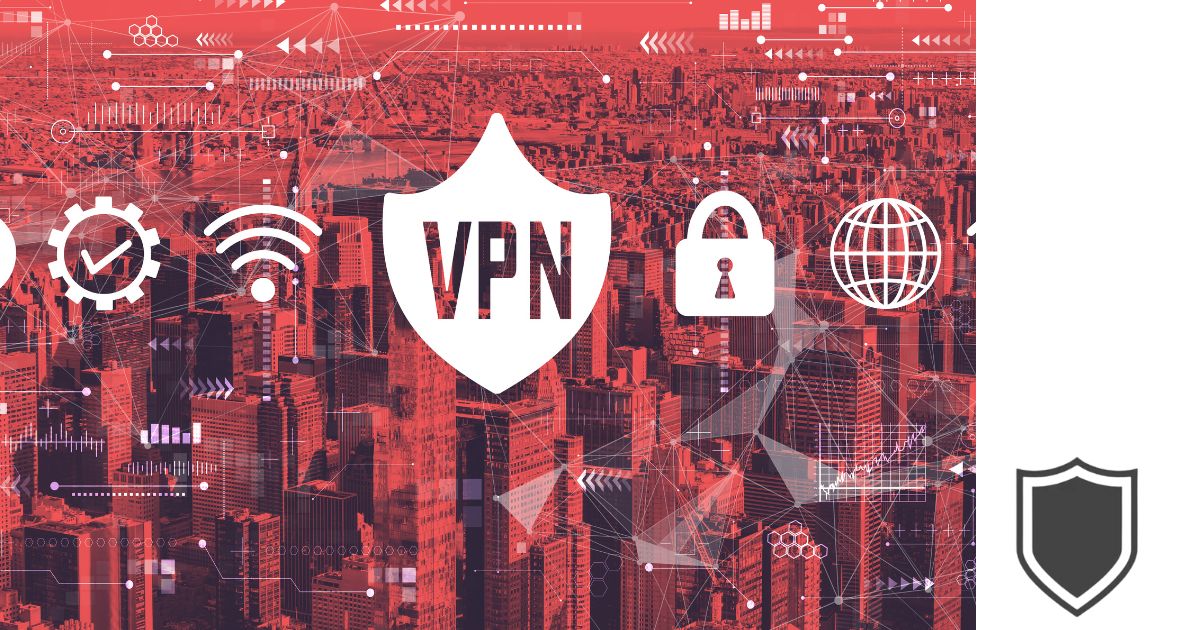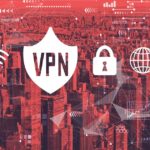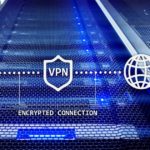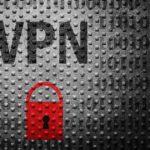Hello everyone, I’m Dr. Edward Baldwin, here to assist, diving into the realm of cyber investigation on a topic that’s gaining traction in our increasingly interconnected society: the identification of VPN usage. In this article, we’re not just uncovering hidden networks; we’re exploring the motivations for employing VPNs.
VPNs, or Virtual Private Networks, have become commonplace for both personal and professional use. They’re like digital chameleons, offering privacy and security by masking your online presence.
But why would you want to detect one? From understanding network security to enforcing company policies, or even just satisfying a healthy dose of cyber curiosity, there are numerous reasons.
So, whether you’re a tech enthusiast, a concerned parent, or a vigilant business owner, understanding how to detect a VPN can be an invaluable part of your digital toolkit.
Let’s peel back the layers of this digital onion and discover what lies beneath the surface of VPN usage.
Table of Contents
Understanding VPN Detection

In this section, I’ll explain the complexities behind detecting when a VPN is being used and why it’s important to do so.
What Is VPN Detection?
VPN detection refers to the process I use to identify whether internet traffic is being routed through a Virtual Private Network (VPN). A VPN essentially masks a user’s real IP address and encrypts data transfer, making it challenging to track the user’s online activities. I detect the use of a VPN by examining characteristics like IP addresses, known VPN server indicators, or data packet inspection.
- IP Address Analysis: Checking if an IP address is part of a range known to be used by VPN services.
- Data Packets: Inspecting data packets for encryption patterns typical of VPNs.
- Port Usage: Monitoring for traffic on ports commonly associated with VPN protocols.
Importance of Detecting VPNs
Security Measures: For me, detecting VPN use is critical, as it can indicate attempts to bypass network security, masking potentially malevolent activities.
- Content Restrictions: I also use VPN detection to enforce geo-restrictions or licensing agreements by content providers.
- Network Policy Compliance: In a corporate setting, it’s important for me to ensure all users comply with network policies, which might restrict VPN use.
By looking for these specific indicators and employing techniques like port blocking or blacklisting IP addresses, I can effectively determine the presence of VPN use.
Basic Indicators of VPN Use

When I’m trying to detect if someone is using a VPN, I focus on certain tell-tale signs. Let’s dive into the basic indicators that are most telling.
IP Address Analysis
The first thing I look at is the IP address. VPNs mask a user’s actual IP address with one from their servers:
- Shared IP Addresses: Many users connecting from the same IP address can suggest a VPN, since VPN services often have multiple users on a single IP.
- IP Location Inconsistencies: If the IP’s registered location doesn’t match with other geolocation data, that’s another hint.
Consistency Checks
Another reliable indicator is consistency, or lack thereof, in connection data:
- Time Zone Discrepancies: If the time zone inferred from the IP address doesn’t align with other clues from the user’s activities, it may point to VPN use.
- WebRTC Leaks: Sometimes, a browser’s WebRTC feature can reveal a user’s real IP address, even when a VPN is in use. Comparing the public IP with the WebRTC IP can uncover inconsistencies.
By paying attention to these factors, I can often determine if a VPN is in use.
Advanced Detection Techniques

In my experience, advanced techniques are essential for accurately detecting the use of a VPN. These methods go beyond basic checks and allow for a more thorough analysis.
Deep Packet Inspection
Deep Packet Inspection (DPI) is a sophisticated method I use for identifying VPN traffic. DPI examines the data part of a packet as it passes an inspection point, looking for signatures that are indicative of VPN protocols such as OpenVPN or PPTP. This level of scrutiny is especially useful for network administrators who aim to enforce network policies and maintain security.
Traffic Analysis
Traffic Analysis involves observing patterns and inconsistencies in data flow which may signal the presence of a VPN. By analyzing packet sizes, timing, and destination ports, I can often infer whether the traffic is encrypted in a way that is characteristic of VPNs. Unexpected consistency in traffic patterns, especially across ports that typically don’t see encryption, can be a telltale sign.
Behavioral Analysis
Finally, Behavioral Analysis is a technique where I look for patterns of human behavior within network usage that correlate with known VPN use cases. For instance, if a sequence of actions on a network closely mimics that of a known VPN protocol’s handshake or if there’s a sudden change in IP address without loss of session continuity, it can indicate an active VPN connection. Such anomalies can provide strong indications of the use of a VPN when combined with other data points.
Tools and Software Solutions

Now, I’ll introduce some tools and software solutions designed to help detect VPN usage. These aim to enhance network security and ensure compliance with various online service policies.
VPN Detection Services
VPN Detection Services offer a specialized solution to identify VPN connections. By maintaining a database of known IP addresses associated with VPN provides, these services can cross-reference incoming traffic against this list. For instance, a VPN detection service might flag a specific IP address that’s been previously marked as belonging to a VPN server. This way, organizations can prevent users from bypassing geo-restrictions or accessing content in violation of licensing agreements. It’s a straightforward approach with minimal setup required from the user’s end.
Network Monitoring Tools
Network Monitoring Tools are more comprehensive in scope, aimed at scrutinizing all traffic passing through a network. I can employ these tools to analyze patterns that are typical of VPN use, such as:
- Unusual IP Addresses: Presence of IP addresses from regions outside of the expected user base.
- Port Usage: Some VPNs use specific ports, which can be monitored for suspicious activities.
- Protocol Analysis: VPN traffic often uses specific protocols that can be detected by these tools.
By carefully setting up and configuring network monitoring tools, I can effectively pinpoint and investigate potential use of VPNs on my network.
Implementing VPN Detection

Detecting the use of VPNs is a multifaceted process that involves monitoring network traffic and identifying patterns indicative of VPN use. I’ll guide you through setting up detection systems and the appropriate responses once a VPN is detected.
Setting Up Detection Systems
To begin with, Network Traffic Analysis is a cornerstone in VPN detection. I usually start by evaluating data packets for header information, scrutinizing IP addresses, destination ports, and protocol types. It’s important to integrate tools that can:
- Inspect Deep Packet Information to discern between standard and encrypted traffic.
- Reference Databases such as IP2Location.io for known VPN exit node addresses.
I find that setting up systems correctly is a fine balance between being thorough and maintaining user privacy, especially with false positives.
Responding to VPN Detection
Once my system identifies a potential VPN connection, the response strategy must be proportionate. Here are the steps I typically take:
- Verification: Confirm if the detection is indeed a VPN. I do this by cross-referencing with updated VPN signatures.
- Action: Depending on policy, I might block access, request additional authentication, or simply log the event.
By having clear, predefined responses, I can make sure the actions taken are consistent with my site or application’s policies and legal considerations.
Legal and Privacy Considerations

In detecting VPN usage, it’s crucial to balance the legal frameworks governing such tools against the privacy rights of individuals.
Compliance Requirements
From my understanding, VPN legality varies significantly across jurisdictions. Most countries allow VPN use, but some impose strict regulations. For instance, VPNs are outlawed in countries like Belarus and North Korea. In contrast, nations like the United States and the United Kingdom offer a relatively open environment for VPN usage, but even there, compliance with local laws is a must when detecting VPN usage.
- Legal: Check the local laws regarding VPN detection and restrictions.
- Corporate Policy: If at a company, adhere to internal regulations concerning VPN monitoring.
User Privacy Issues
While respecting laws, I also consider the privacy concerns of VPN users. Many individuals use VPNs to safeguard their personal information, and detecting their VPN usage can be seen as intrusive. It’s essential to ensure that any monitoring of VPN usage meets data protection standards, such as GDPR in Europe, which uphold users’ rights to privacy.
- Consent: Obtain user consent where necessary before attempting to detect VPN usage.
- Transparency: Be clear about the reasons behind VPN detection and how the information will be used.
The Last Word
And there we have it – a comprehensive look into the world of VPN detection. From the why to the how, ‘Internet Insights: How to Detect a VPN and Why It Matters’ has hopefully shed some light on this often-overlooked aspect of our online lives.
Remember, the ability to detect a VPN isn’t about invading privacy; it’s about understanding the digital landscape, ensuring security, and maintaining transparency in our online interactions.
Whether you’re safeguarding corporate data, monitoring network usage, or simply curious about the technology, knowing how to spot a VPN is a skill that’s becoming increasingly important in our interconnected world.
As we continue to navigate the vast and ever-evolving internet, let’s keep informed, stay aware, and use our knowledge responsibly. Until next time, stay curious and keep exploring the depths of the digital world!
How to Detect a VPN FAQs

In my experience, there are several common inquiries people have about detecting VPNs. From tools to tips, I’ll cover some key points to keep you informed.
What tools can identify a VPN connection on a website?
I’ve found that webmasters use various software tools to detect if a user is connecting through a VPN. These tools usually analyze IP addresses and check for known VPN servers.
How can I check if my mobile phone is connected to a VPN?
On my mobile phone, I usually look for a VPN symbol in the status bar. Alternatively, I can check my phone’s network settings where VPN configurations are displayed.
Is there a way to tell if a user online is employing a VPN service?
Indeed, I can sometimes tell if an online user is using a VPN. This can be done by checking for IP addresses that are known to be associated with VPN providers or by noticing a mismatch in their IP location and reported timezone.
What methods do websites utilize to recognize a VPN connection?
Websites often examine the IP address of visitors and match it against databases of known VPN providers. Some also look for IP, DNS, or WebRTC leaks that may indicate the use of a VPN.
Can the use of a VPN be traced or located by someone?
I can say that while VPNs are designed to offer privacy and anonymity, some VPNs may have leaks or could keep logs that potentially allow tracing under certain conditions. However, a well-configured VPN should not be traceable to an individual user.
How can you tell if an IP address belongs to a VPN?
To determine if an IP address is from a VPN, I check it against databases of addresses known to be used by VPN services. A discrepancy between geographical and IP-reported locations often gives it away.
- Internet Insights: How to Detect a VPN and Why It Matters - June 1, 2025
- The Art of Mac Hard Drive Data Recovery: Tips from the Experts - June 1, 2025
- How to Tell if VPN is Encrypted: Quick and Easy Verification Methods - June 1, 2025










